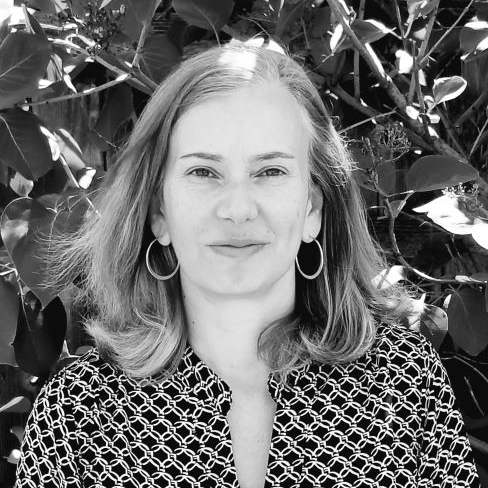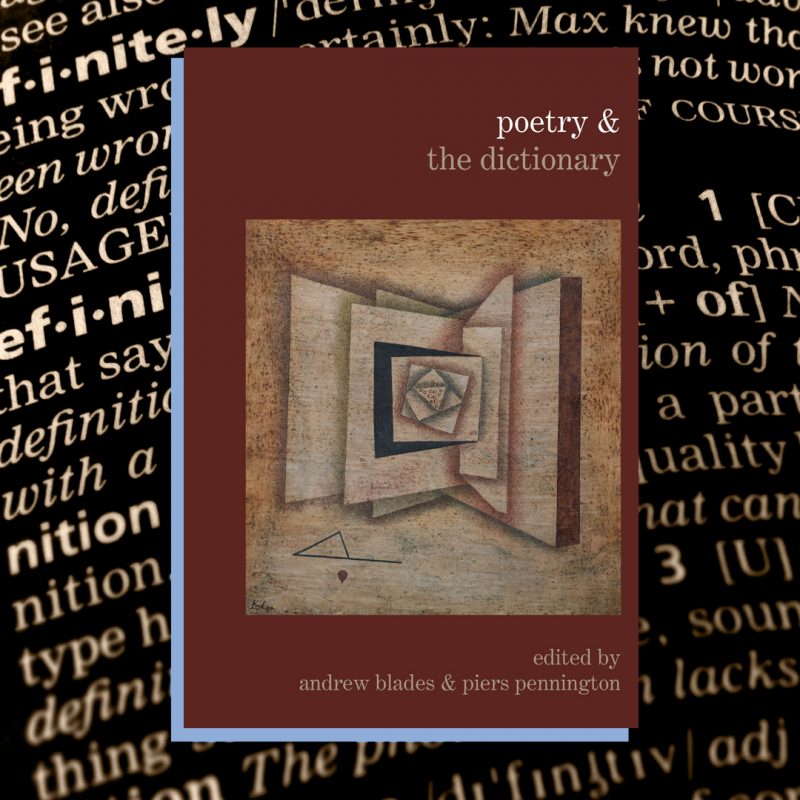USEREVIEW 070: By Definition
Renée M. Sgroi assesses the ability of the text to live up to to its own self-definition in this traditional review of Poetry & the Dictionary, an essay collection edited by Andrew Blades and Piers Pennington (Liverpool University Press, 2020).
ISBN 978-1-78962-056-6 | 312 pp, hardcover | $132 CAD (£90) — BUY Here
#CAROUSELreviews
#USEREVIEWEDNESDAY
Poetry & the Dictionary is a collection of academic essays that examines poetic engagements with dictionaries, particularly the Oxford English Dictionary. Part of a larger Poetry &… series (which includes volumes such as Poetry & Language Writing and Poetry & Geography), Poetry & the Dictionary aims to explore “key concepts in contemporary poetry.” Most of the essays in this book discuss early 20th-century poetry, so it is debatable whether or not this collection is entirely concerned with contemporary poetic issues (although to be fair, poets today might still wrestle with the legacies of modernism, a tradition now one hundred years old). As an academic text, this book may also require readers to refresh their knowledge of Saussure’s Course in General Linguistics and of structuralism more generally, as so many of the essays hinge on a solid understanding of structuralist linguistics. Nevertheless, it is definitely an informative read.
Divided into three key sections, the first section of Poetry & the Dictionary looks at the OED’s history and compilation, with special attention to the dictionary’s use of quotations, many of which originally derived from poetry. ‘Part 2: British and Irish Poetry & the Dictionary’ focuses on UK poets who mined the dictionary for both political and experimental purposes. The final section covers American poets and their engagements with dictionaries. While no one book can possibly capture all English-language poetry worldwide, it would have been interesting to also read essays in this book about 20th-century BIPOC poets, and those living and writing beyond UK / US boundaries, and their engagements with dictionaries. Still, there are several essays in this collection that challenge its structure, and succeed in substantiating the argument that there exists a deep entanglement between poets and dictionaries worth examining.
In particular, Charlotte Brewer’s examination of the OED’s history in the book’s first section raises questions about how subjective the OED’s compilation actually was (despite the fact that it is, ostensibly, an objective reference book on the English language). As Brewer explains, in order to create word definitions for the OED, its editors asked readers to submit literary quotations from available sources at the time (most notably poets, including Shakespeare, as well as the Bible). Brewer demonstrates how this process was linked to Victorian-era approaches within the natural sciences that attempted to uncover human and geologic origins by digging through the available (and what was at the time considered objective) empirical data. Thus the OED’s birth was married to the idea that the words we use and their meanings are “out there” in the field. One problem of course is that the raw “data” of quotations submitted by readers were, in fact, subjectively chosen to begin with. More importantly, however, the OED’s editors then extracted definitions from those data based on their own particular tastes, and it is this subjective editorial selection which Brewer’s piece rightly highlights as problematic.
The implications of Brewer’s analysis are further fleshed out in Deborah Bowman’s ‘not even invented’ in the book’s second section on UK poets. Bowman’s essay looks at the OED through the lens of William Empson’s poetry in the 1930s, and claims that “The OED contains, among other things, the history of who has been master.” As such, her essay draws attention to the imperialist project underpinning the OED’s history and structure. Bowman argues for an “etymological imagination” in Empson’s work which draws out of the shadows “the OED’s provisionality, from which any definitional change must spring.” Michael Whitworth’s essay on Hugh MacDiarmid, and Mia Gaudern’s examination of Irish poet Paul Muldoon’s poetry (also in Part 2) speak to the legacies of the imperialist project within Scottish and Irish contexts, respectively.
It is not until the third and final section of the book that we begin to see any real engagement with more contemporary poets. In particular, Giles Goodland’s ‘Long Poems about Everything: Dictionary as Subject and Model for Poem, 1974-2016,’ focuses on ‘Langpo’ poets such as Louis Zukofsky, Clark Coolidge and Ron Silliman among others, whose work is “‘language-centred’ or ‘language-directed’ poetry.” For Goodland, “works of reference became sites of interest in Langpo because the long unfolding dialogue between signifier and signified was able to be played out … using poetry to expose ideologies, hidden biases, and power structures.” That these power structures can be and are disrupted is best encapsulated in Kate Potts’ essay, where she concludes that: “The poetic appropriation of dictionary definition form therefore allows the poet (and encourages the reader) to insert their own voices, with its own specificities, into the cultural lexicon,” an idea echoed in Andrew Blades’ essay, also in this third section, that the OED is “both reflective of the language and generative of it … indeed, it is the supreme intertext of English itself.” An intertext implies weaving, which Blades explains by drawing on Julia Kristeva’s work, where “intertextuality is ‘a mosaic of quotations’ in which ‘any text is the absorption and transformation of another.’” For Blades, this means that “The OED offers apparently definite, even ‘definitive’ meanings; and yet it also gestures towards the infinite. While the lists of citations are discrete, they also indicate by omission the limitless permutations and potentials of usage.”
As intertext, there is a missed opportunity in Poetry & the Dictionary to have engaged more robustly with English-language poets worldwide by rethinking the book’s selection criteria, and possibly by experiments in social media. For instance, by having contemporary poets deploy social media apps to speak about their engagements with dictionaries (in the same way as the first OED called upon readers to send in quotations for usage), Poetry & the Dictionary might have gestured towards those “limitless permutations” that Blades argues are possible in and through the OED. In so doing, this essay collection could have become more fully engaged with the diversity of voices writing contemporary English-language poetry. Like a quarterly OED update, that essay or collection of essays might enter the Poetry &…. series at some future point, but for readers willing to engage with this more academic text, Poetry & the Dictionary will provide a degree of poetic and intellectual investigation that may ultimately lead to polyvocal poetry.


